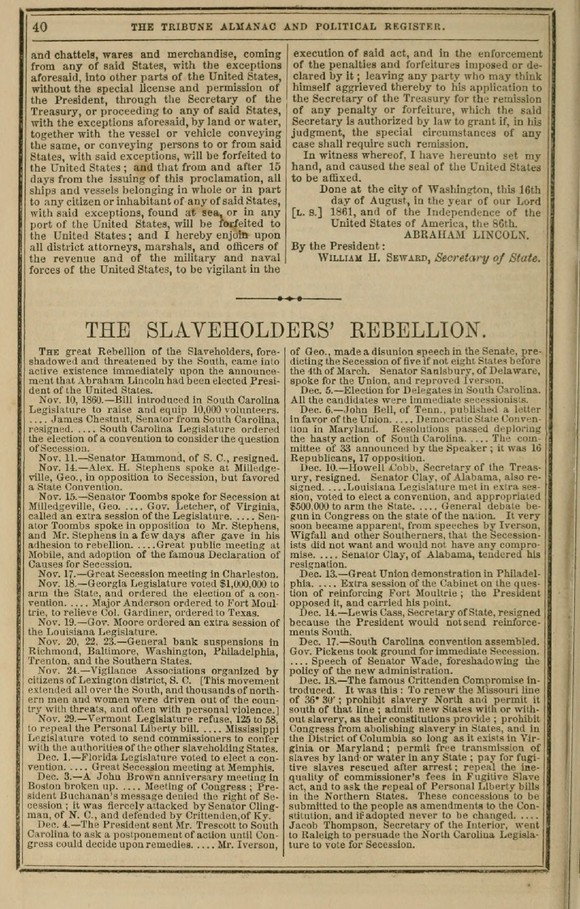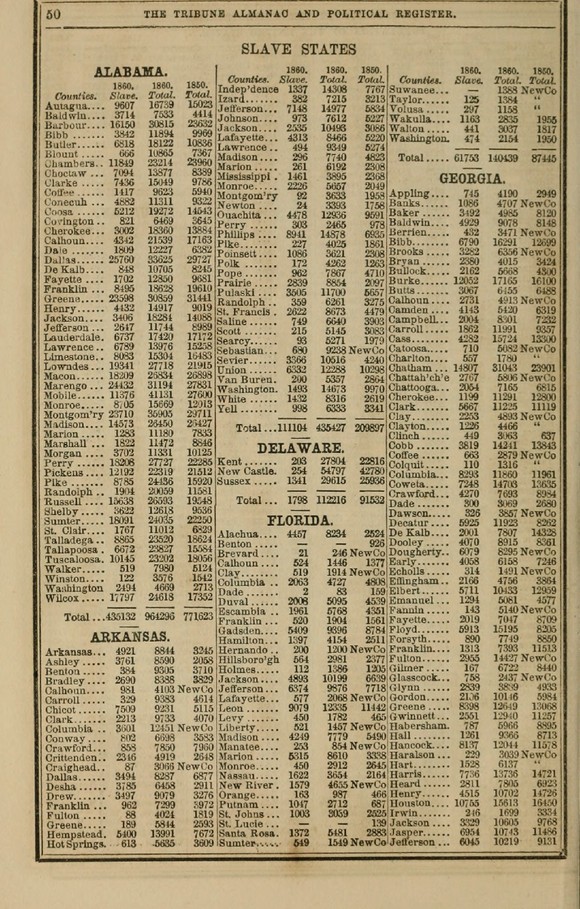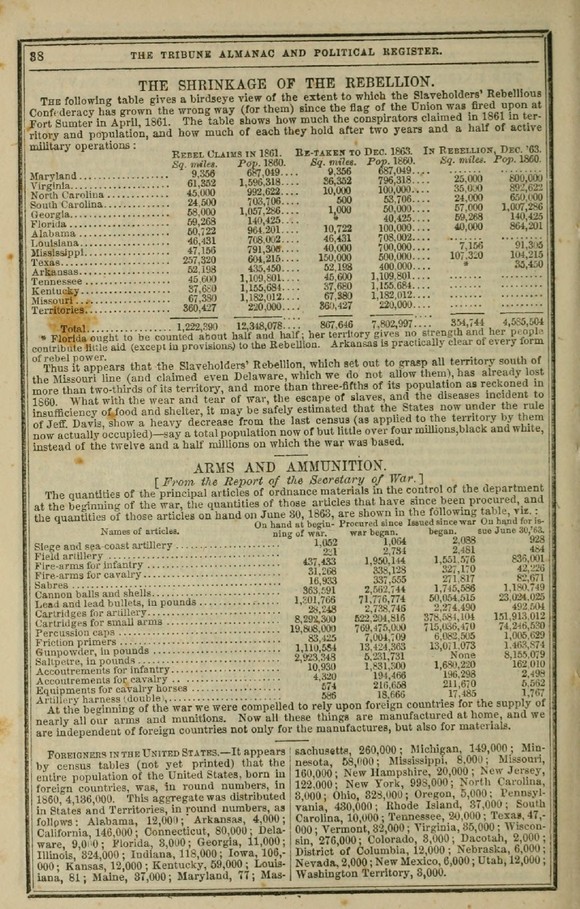Starting from:
$9.95
Civil War: New York Tribune Almanac and Political Register (1856-1869)
Civil War: New York Tribune Almanac and Political Register (1856-1869)
978 pages of the annual Tribune Almanac and Political Register (1856-1869).
First published in 1856 the Tribune Almanac and Political Register published the traditional astronomical calculations and calendars found in almanacs. It also included reference information on government and politics. It covered major laws and election returns for state and national offices, and political conflict in the United States before the Civil War. After Fort Sumter coverage of the Civil War was added. After the war issues involving reconstruction was added.
Published by the New York Tribune and edited by the Tribune's founder Horace Greely, it reflected Greely's Whig Party political leanings, then later the Republican Party.
When the Whig Party fell apart in the early 1860's and was replaced by the Republican Party, The New York Tribune, and The Almanac by extension, became
Republican publications. The Almanac covered Republican backed Homestead Bill of 1860. The free-soilers's bill was vetoed by Democratic president James Buchannan. Coverage was given to all political parties competing in the 1860 presidential campaign, detailing the candidates and platforms, and election results. One of the most valuable uses for The Almanac is for studying the details of the results of the 1860 and 1864 presidential elections.
The first edition covered the "Bloody Kansas" political climate in Kansas. With succession of the Confederate states, coverage was extended to the rebel states. The 1862 edition began the day by day summary covering of the civil war, referred to by the Almanac as the "Slaveholders Rebellion."








978 pages of the annual Tribune Almanac and Political Register (1856-1869).
First published in 1856 the Tribune Almanac and Political Register published the traditional astronomical calculations and calendars found in almanacs. It also included reference information on government and politics. It covered major laws and election returns for state and national offices, and political conflict in the United States before the Civil War. After Fort Sumter coverage of the Civil War was added. After the war issues involving reconstruction was added.
Published by the New York Tribune and edited by the Tribune's founder Horace Greely, it reflected Greely's Whig Party political leanings, then later the Republican Party.
When the Whig Party fell apart in the early 1860's and was replaced by the Republican Party, The New York Tribune, and The Almanac by extension, became
Republican publications. The Almanac covered Republican backed Homestead Bill of 1860. The free-soilers's bill was vetoed by Democratic president James Buchannan. Coverage was given to all political parties competing in the 1860 presidential campaign, detailing the candidates and platforms, and election results. One of the most valuable uses for The Almanac is for studying the details of the results of the 1860 and 1864 presidential elections.
The first edition covered the "Bloody Kansas" political climate in Kansas. With succession of the Confederate states, coverage was extended to the rebel states. The 1862 edition began the day by day summary covering of the civil war, referred to by the Almanac as the "Slaveholders Rebellion."








1 file (423.8MB)



